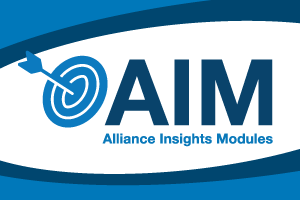
Can Better Branding Cause Greater Ministry Impact? By Joan Begitschke
What’s Your Brand Represent?
Every organization has a brand, whether it is intentionally managed or not. Your brand represents who you are, what you do, and why your ministry matters to the audiences you care about. Proper attention to your brand lifts all boats. But if left unattended, you have a gaping hole of daily missed opportunities for the organization to be more efficient, focused, and impactful.
You’ve likely heard that a brand is more than your logo and tagline, which is true. Your brand is created through the totality of an individual’s experiences with your organization—through its services themselves, your website, interactions on social media, e-newsletter updates, donor solicitations—all of it.
It’s what people think of and expect when they hear your ministry’s name.
Three Branding Pitfalls
(1) Weak message.
The key messaging and visual look and feel created for your brand should accurately reflect the best of who you are and express your uniqueness in a way that connects with audiences. A good brand identity works for donors, those actively involved, and those being served.
(2) Lack of buy-in from the top.
Without buy-in at the top, the organization almost certainly has poor brand implementation. This leads to a missed opportunity to use branding to extend your mission and vision and translate what you do into a meaningful promise.
(3) Poor brand management.
This is often the case with smaller ministries due to the realities of budget constraints. While no brand development work will take the place of actually doing good work and making a difference in people’s lives, growth will be capped or impeded, in my opinion, if your brand is not carefully tended and nurtured.
In a nutshell, brand strategy and development help identify your core uniqueness and express it in a way that resonates with key audiences. It begins with consensus on what is most important and who (what audiences) are most important . . . a sometimes messy process!
Yet the rewards of doing branding better are worth the effort. If done well, more often than not, you’ll be rolling the ball down the hill rather than constantly pushing it up the hill!
Three Benefits of Good Branding
(1) Increased value.
What’s the difference between one relief and development organization and another? To the casual observer, they all may seem pretty much the same. But branding quickly conveys a promise that connects and can engender greater trust, confidence, and good will with your audiences.
(2) Improved efficiency.
Internally, a clear brand helps organizations focus on the activities and initiatives they value most. It helps direct decisions on staffing and use of staff time on priorities. And it can help attract the “right” people who care passionately about the mission (and who therefore often work harder for it).
(3) Communication effectiveness.
Quick, think of World Vision. You likely saw in your mind’s eye the color orange. And while a brand identity is created through more than just color, in this case, orange is an important component of the World Vision look and feel.
The point here is that consistency across communications maximizes every individual communication and builds on all the others, creating or increasing familiarity with your organization.
So whether the audience views your website, experiences your on social media, or receives donor solicitations, the familiarity of your brand reinforces and makes each communication not have to work quite as hard to make an impression.
One last word—just like each of us, your brand is unique, living, and ever improving. It is never finished. So if you’re waiting for the perfect time before acting, it will never come.
##
Joan Begitschke is the founder and principal at Verve Marketing Group in Chicago. Verve helps ministries with strategic planning and creative execution of digital and print communications. Follow Joan @jbegits.
It’s almost time for CLA’s Spring Online Modules: Deadline March 24!
CLA Online Academy offers a great new line up of online classes, including:
Marketing & Communications
How to Develop a Digital Marketing Strategy




